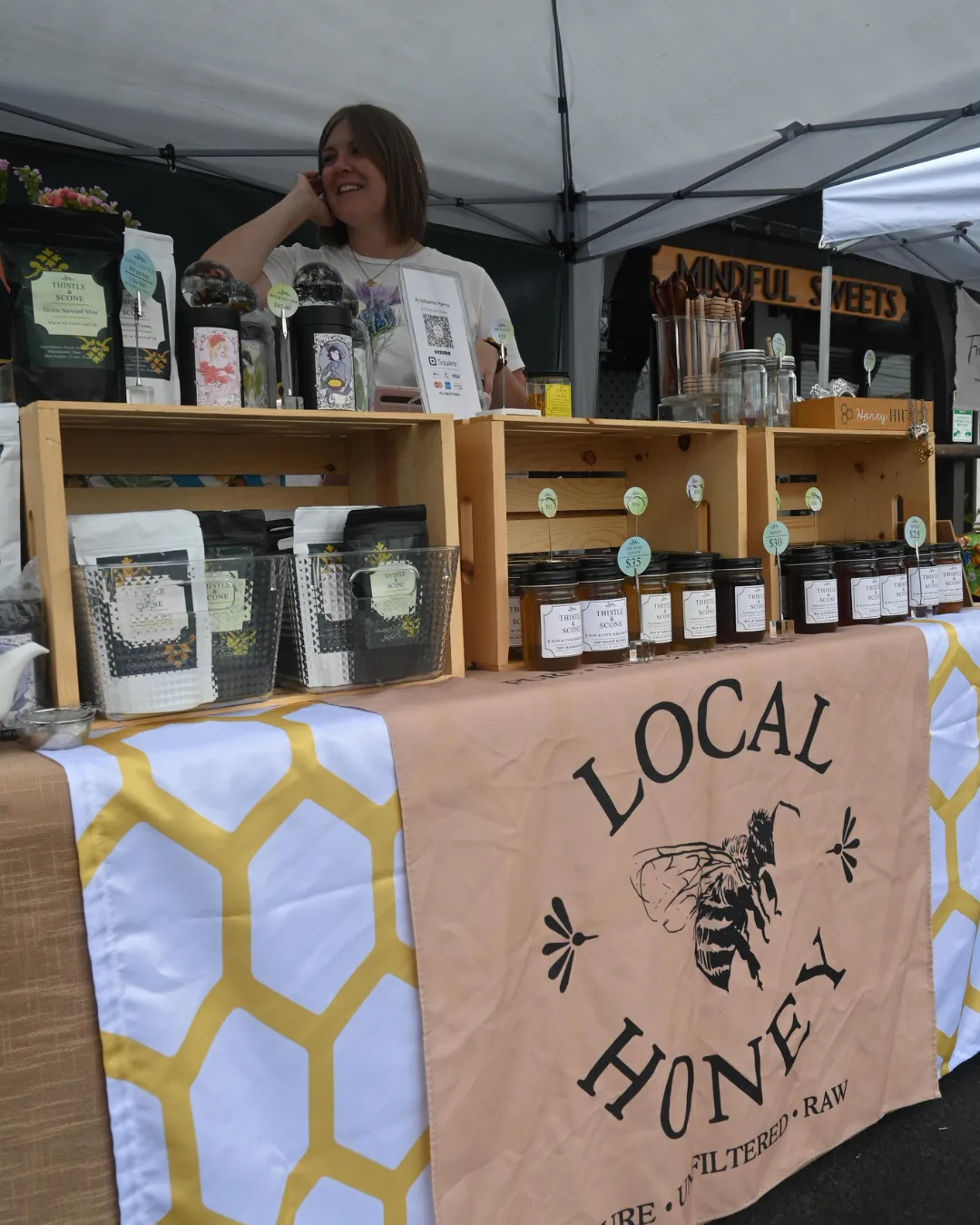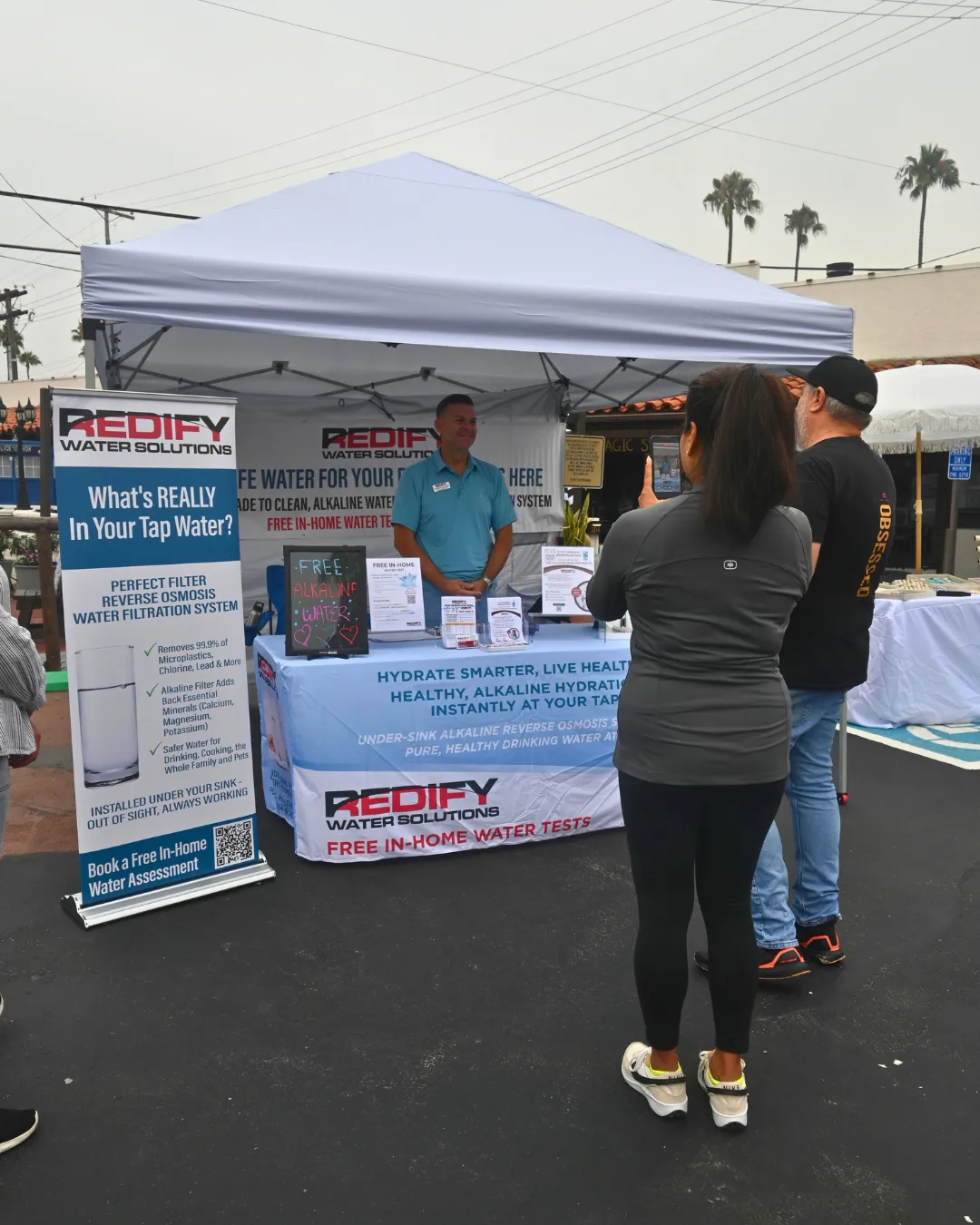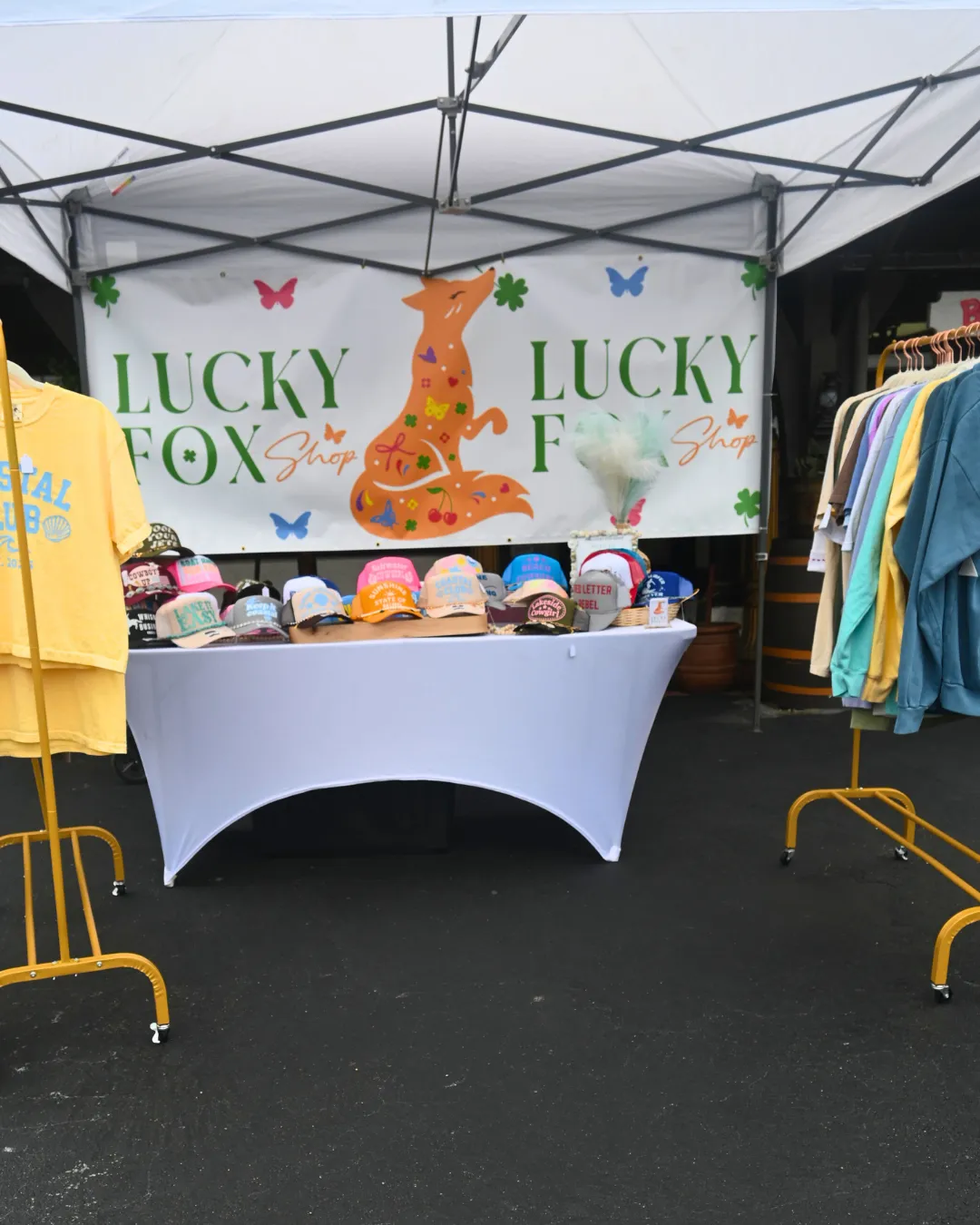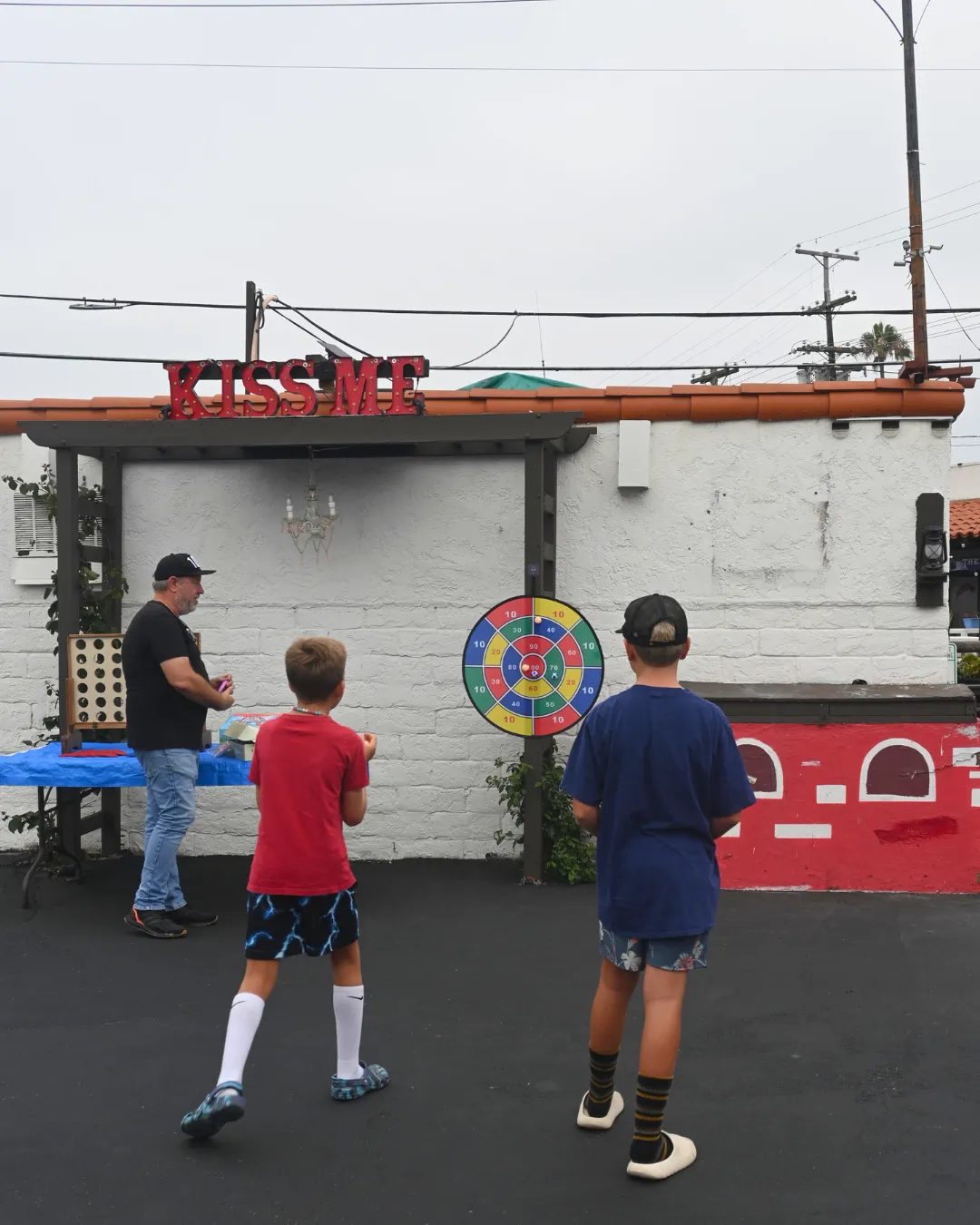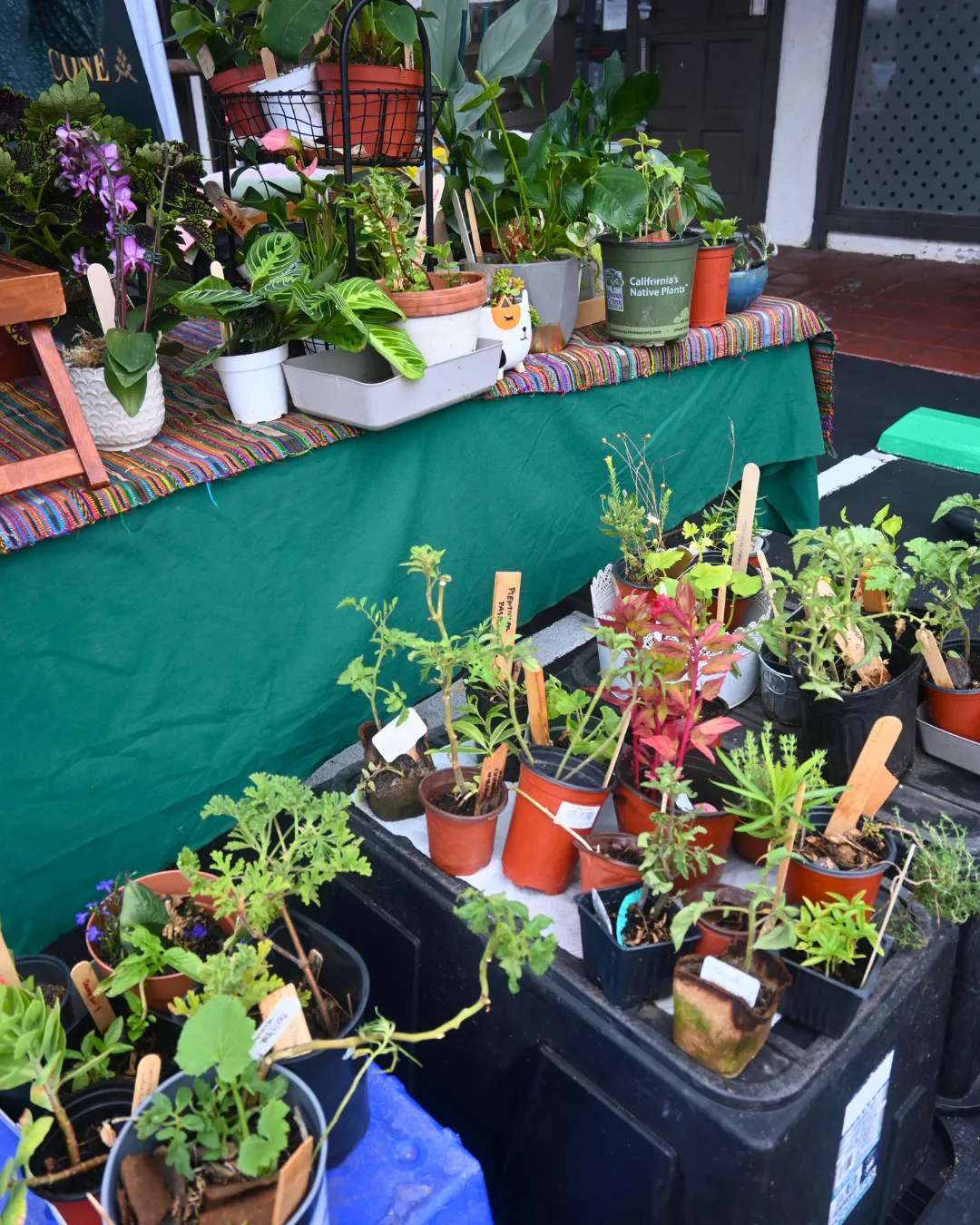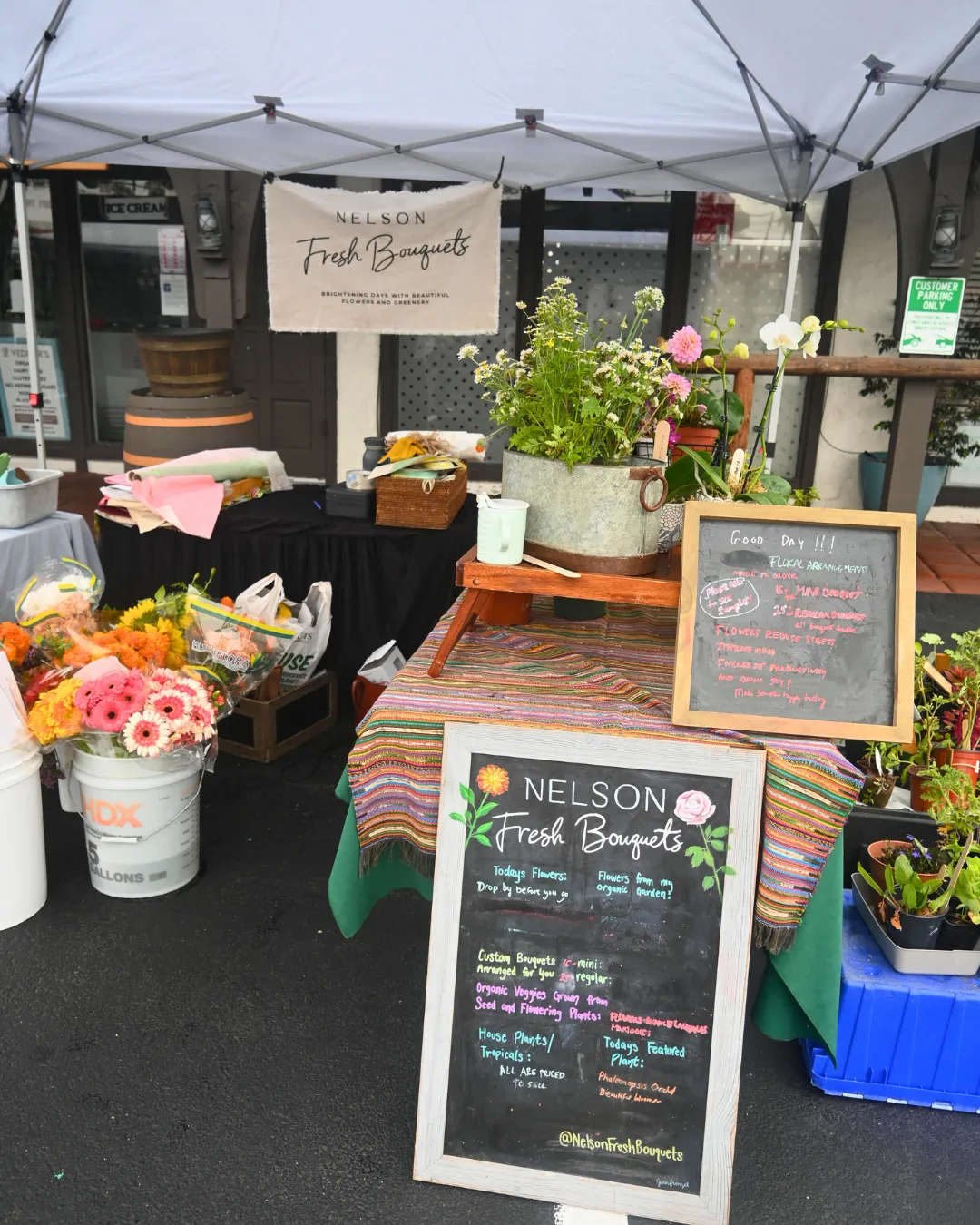FARMERS MARKET SAN CLEMENTE
LOOKING FOR A FAMILY FRIENDLY NEIGHBORHOOD FARMERS MARKET?

Awesome location in the heart of San Clemente
Best deals with quality vendors
Family run and family oriented
Don't pass up this opportunity to meet some amazing vendors, try delicious food, and bring back some homemade treats!
Enter your info below to get monthly info
🛒 What Is a Farmers’ Market?
A farmers’ market is a local marketplace where farmers and food producers sell their goods directly to the public. These markets may be held outdoors in open-air plazas or indoors in seasonal venues, and typically feature booths, tents, or tables where vendors offer fresh produce, plants, flowers, handmade goods, and sometimes prepared foods or beverages.
Farmers’ markets are found in communities all over the world and often reflect the culture, agriculture, and values of the region. Some are small and intimate—just a handful of stalls—while others span entire city blocks, attracting thousands of weekly visitors.
What makes a farmers’ market unique is its direct-to-consumer model. There are fewer middlemen, fewer steps between harvest and plate, and often fewer regulations than those found in commercial grocery stores. This gives shoppers access to fresher, seasonal products while giving farmers more control over how their goods are sold and priced.
It’s important to distinguish farmers’ markets from public markets, which are typically housed in permanent buildings, operate year-round, and feature a broader mix of vendors—including resellers, grocers, non-food merchants, and packaged goods providers. Farmers’ markets are centered around the grower-to-consumer experience.
SWEETS, BREADS, CANDY
SWEETS & HOTS
Muffins, Pies, Cakes, Cake Pops, Cookies, Breads, Coffee Cake, Ice Cream, Cupcakes, Bagels, Potato Chips, Popcorn, Candy, Cinnamon Rolls, Chocolate, Coffee, Smoothies, Coffee Beans
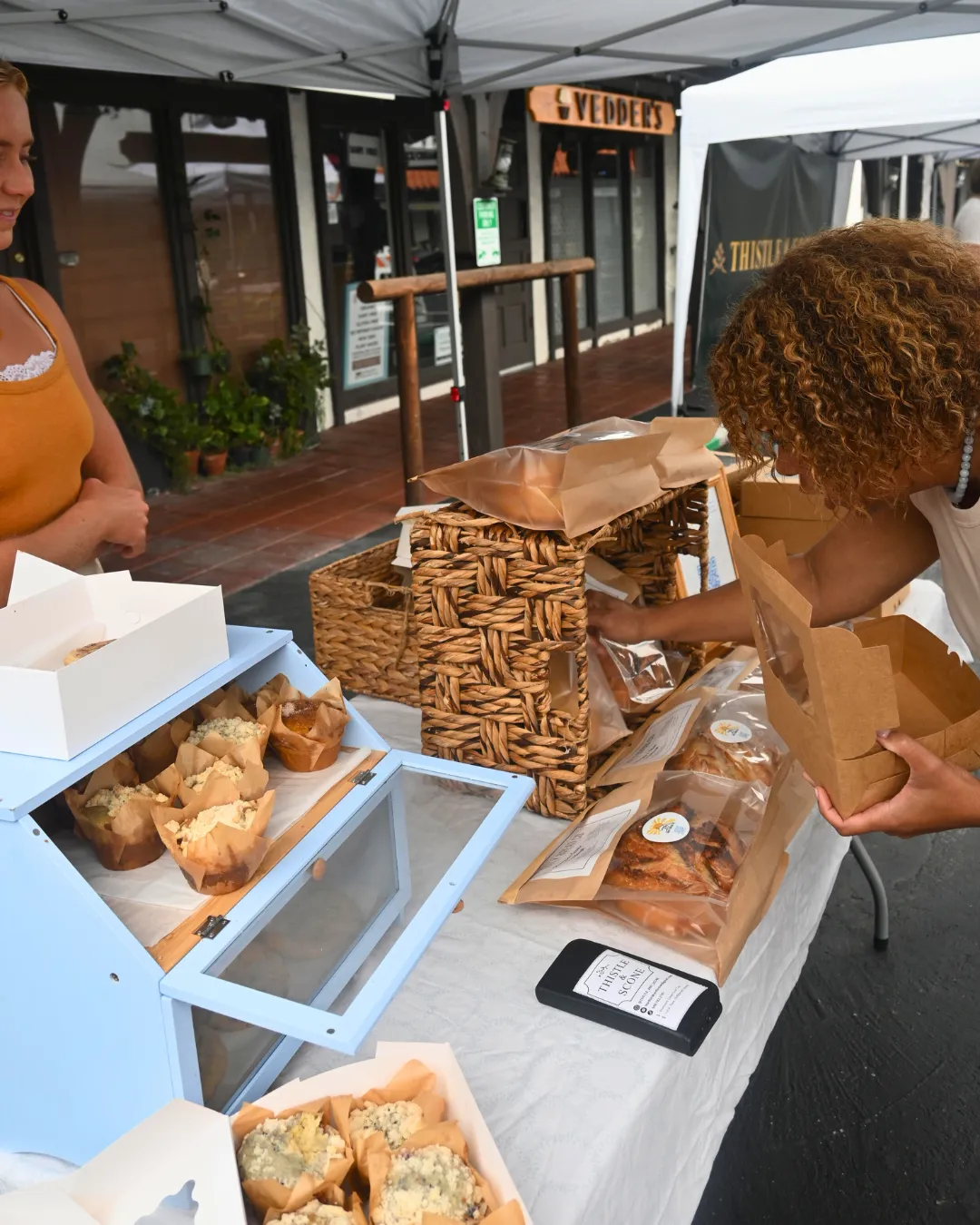
🌾 The History of Farmers’ Markets
While the idea of a farmers' market may feel fresh and modern, its roots go back thousands of years. Before grocery stores, before shipping networks, and long before industrial food systems, communities relied on local markets as the primary way to access food. Farmers, fishers, and craftspeople would gather at central meeting points to trade goods—often in open-air plazas, village centers, or along trade routes.
These early markets weren’t just places of commerce—they were social and cultural hubs. Buying food was personal. You knew who raised the chicken, grew the carrots, or brewed the cider. That personal connection has always been part of the farmers’ market experience.
As cities grew and economies industrialized, food distribution became more centralized. The rise of general stores, and later grocery chains, introduced a model based on mass production, packaging, and efficiency—often at the cost of freshness, transparency, and farmer independence.
However, by the early 2000s, something began to shift. People started craving a closer connection to their food again. Concerns about quality, freshness, sustainability, and support for local businesses sparked a resurgence in farmers' markets worldwide. Consumers began seeking out produce that spent less time in transit, came from known sources, and represented regional diversity instead of uniform, shelf-stable sameness.
This growing demand for fresh, seasonal, and community-grown food has fueled a farmers’ market renaissance—bringing ancient wisdom into a modern context.
FROM THE FARM
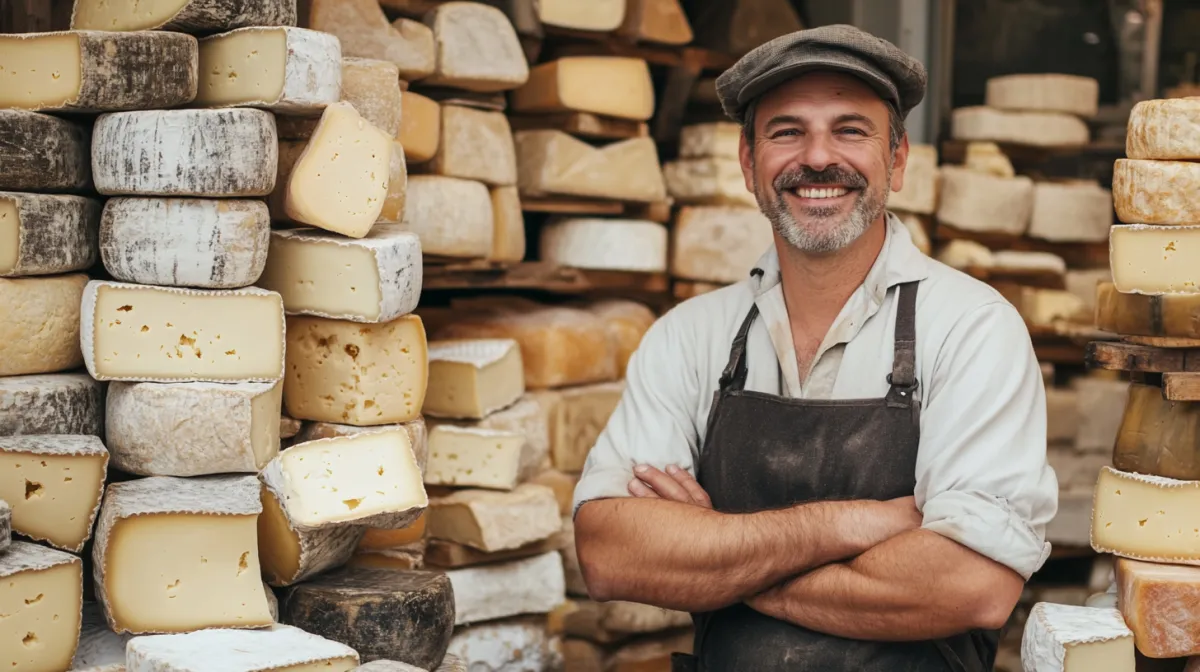
FARM
Cheese, Eggs, Pork, Fish, Beef, Chicken, Liver, Fresh Milk, Jams, Honey, Assortment of Granola, Nuts, Grains, and Seeds, Pickles, Olives, Potatoes, Sour Kraut, Bacon, Turkey, Lamb
🥕 Types of Goods Sold at Farmers’ Markets
Farmers’ markets offer an ever-changing, seasonal bounty—far more than just fruits and vegetables. Depending on the size and region, you’ll often find a wide variety of goods that showcase the diversity of local agriculture and artisan production.
Here’s a breakdown of the most common (and exciting) product categories:
🥬 Fresh Produce
This is the heart of most farmers’ markets. Expect:
Seasonal fruits and vegetables (including heirloom varieties not sold in stores)
Leafy greens, root vegetables, berries, melons, squashes
Local specialties—everything from avocados in California to peaches in Georgia
Many farms use organic, non-GMO, or low-spray practices and are happy to explain their growing methods.
🍖 Meat & Poultry
Some vendors sell:
Fresh cuts of beef, pork, lamb, and goat
Sausages, bacon, jerky, and charcuterie
Free-range poultry and pasture-raised chicken and turkey
All meats sold must be processed in state or federally inspected facilities. Labels usually indicate if products are farm-raised, processed by the seller, or resold from inspected distributors.
🥚 Eggs & Dairy
Free-range eggs (brown, speckled, blue-shell varieties)
Cow, goat, or sheep milk (raw or pasteurized depending on local laws)
Cream, yogurt, butter, and farmstead cheeses
Fresh ice cream or dairy desserts
🥖 Baked Goods
Often handmade that morning, you’ll find:
Breads (sourdough, rye, whole grain)
Pastries, muffins, cookies, cakes
Gluten-free and vegan options
Cultural specialties like empanadas, tamales, or focaccia
🍯 Pantry Items & Preserves
These add shelf-stable value to your weekly visit:
Local honey, maple syrup, and molasses
Jams, jellies, chutneys, hot sauces, and pickles
Dried herbs, spice mixes, and flavored oils
Small-batch roasted coffee, tea blends, and cocoa
🌻 Plants & Flowers
Many farmers also sell:
Fresh-cut flowers, bouquets, and garlands
Potted herbs and vegetables for home growing
Native plants, succulents, and ornamentals
Seedlings and garden starters during planting seasons
🧺 Crafts & Artisanal Goods
Especially in community-focused markets, you may also find:
Handmade soaps, lotions, and candles
Pottery, textiles, woodwork, or jewelry
Beeswax wraps, eco-friendly containers, and reusable bags
While these vendors may not all be farmers, their inclusion helps support a broader local creative economy—and adds texture to the market atmosphere.
💡 Tip: Many markets require food vendors to be the producers themselves (often called “producer-only” markets), while others allow resale, co-packing, or distributor models. Look for labels or ask questions—transparency is a cornerstone of farmers' market culture.
FROM THE GARDEN
GARDEN
Bananas, Oranges, Cherries, Apples,
Plums, Coconut, Kiwis, Guava, Strawberries, Blueberries, Watermelon, Honeydew Mellon, Cantaloupe, Date, Limes, Lemons, Pineapple, Grapes, Peaches, Nectarines, Pear, Tangerine, Mushrooms Lettuce, Cucumber, Artichoke, Broccoli, Horse Radish, Cauliflower, Cabbage, Celery, Jalapenos, Tomatoes, Soups, Carrot Juice, Tomato Juice
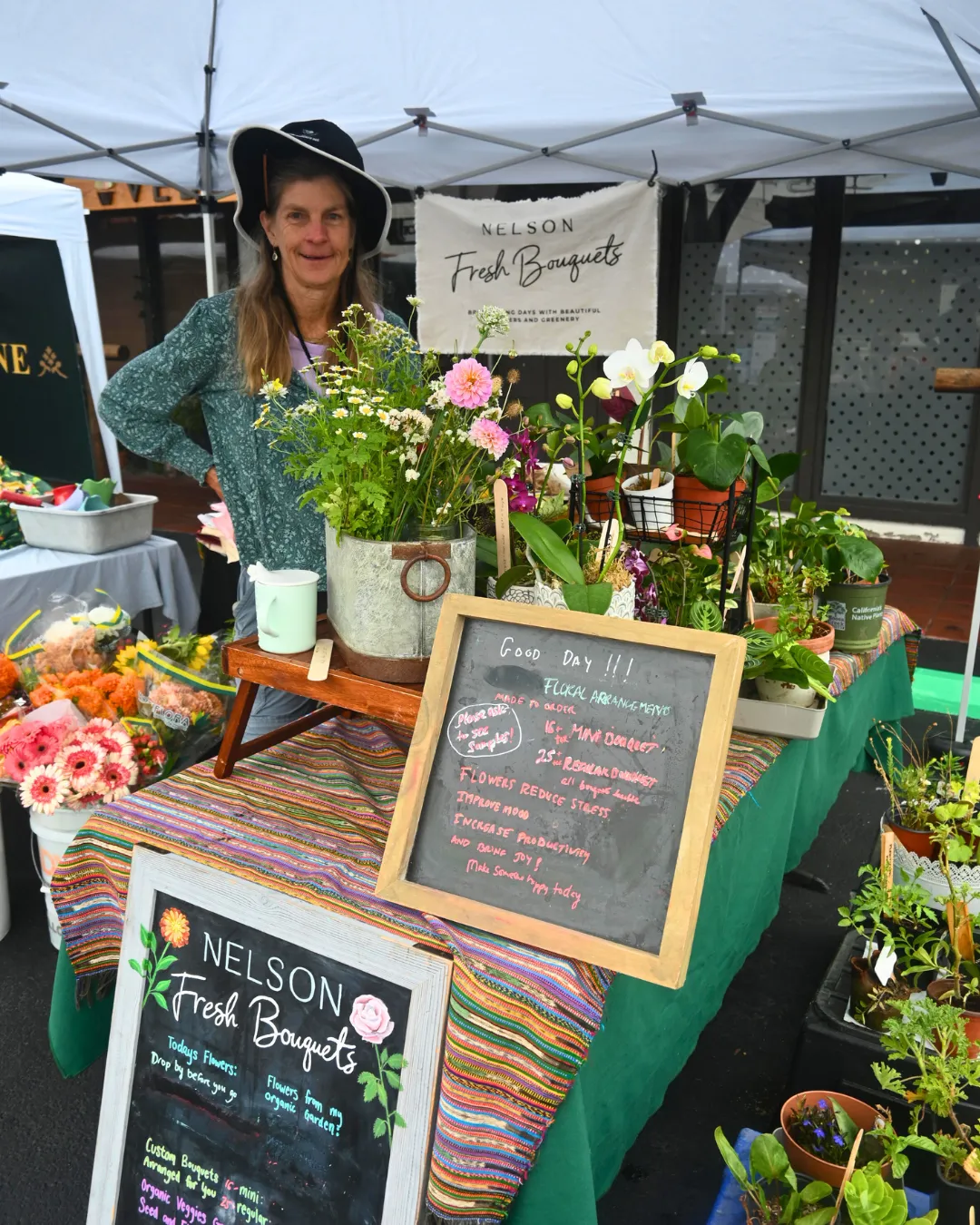
🌱 The Benefits of Farmers’ Markets
Farmers’ markets offer more than just fresh produce—they provide a powerful set of benefits for farmers, communities, and consumers alike. These markets are an engine of connection, local resilience, and sustainable living.
👨🌾 Benefits to Farmers
Higher Profits
Farmers who sell directly to consumers can often earn more than they would by selling to wholesalers or grocery chains. They keep the full retail price rather than splitting profits across multiple layers.
Reduced Costs
Selling at a market often requires less refrigeration, storage, packaging, and transport—especially compared to commercial supply chains.
Immediate Feedback
Face-to-face interactions help farmers understand what customers want, improve quality, and experiment with new offerings (like heirloom tomatoes, specialty herbs, or small-batch sauces).
Independence & Simplicity
Many farmers enjoy the freedom of direct selling—with fewer regulations, more control over pricing, and the opportunity to create a trusted personal brand.
Risk-Sharing Through CSAs
Community Supported Agriculture (CSA) programs often run alongside farmers' markets, allowing customers to pay in advance for weekly or seasonal produce boxes—giving farmers a predictable income and closer community ties.
🏘️ Benefits to Communities
Local Economic Boost
Money spent at a farmers' market stays local, supporting family farms, small businesses, and regional agriculture rather than distant supply chains.
Stronger Social Fabric
Markets act as public gathering spaces, encouraging conversations, relationship-building, and neighborly connections that extend beyond commerce.
Tourism & Local Identity
A vibrant farmers' market can attract visitors and highlight the uniqueness of a town—enhancing civic pride and contributing to a sense of place.
Reduced Environmental Impact
Less transport, storage, and refrigeration = fewer carbon emissions. Markets also promote awareness of sustainability and seasonal eating.
Civic Engagement
Markets often become incubators for local activism, food education, and health initiatives. They reconnect city dwellers with rural producers in meaningful ways.
🛍️ Benefits to Consumers
Fresher, Healthier Food
Because it’s often harvested just hours before sale, farmers' market food is typically fresher, more nutritious, and packed with flavor.
Seasonal Awareness
Consumers learn to eat with the seasons, discovering the real timing of crops like strawberries, tomatoes, or winter squash—and how delicious that rhythm can be.
Greater Variety
Markets often carry heirloom, specialty, and culturally significant items not found in grocery stores—like purple carrots, duck eggs, or wildflower honey.
Transparency and Trust
Shoppers can ask where the food came from, how it was grown, and what practices were used. No guesswork. No green washing.
Lifestyle and Enjoyment
Visiting a farmers’ market becomes a weekly ritual. It's a place to chat, enjoy a walk, try something new, and enjoy an atmosphere that’s more human and joyful than shopping aisles and barcodes.
ART AND EXHIBITS
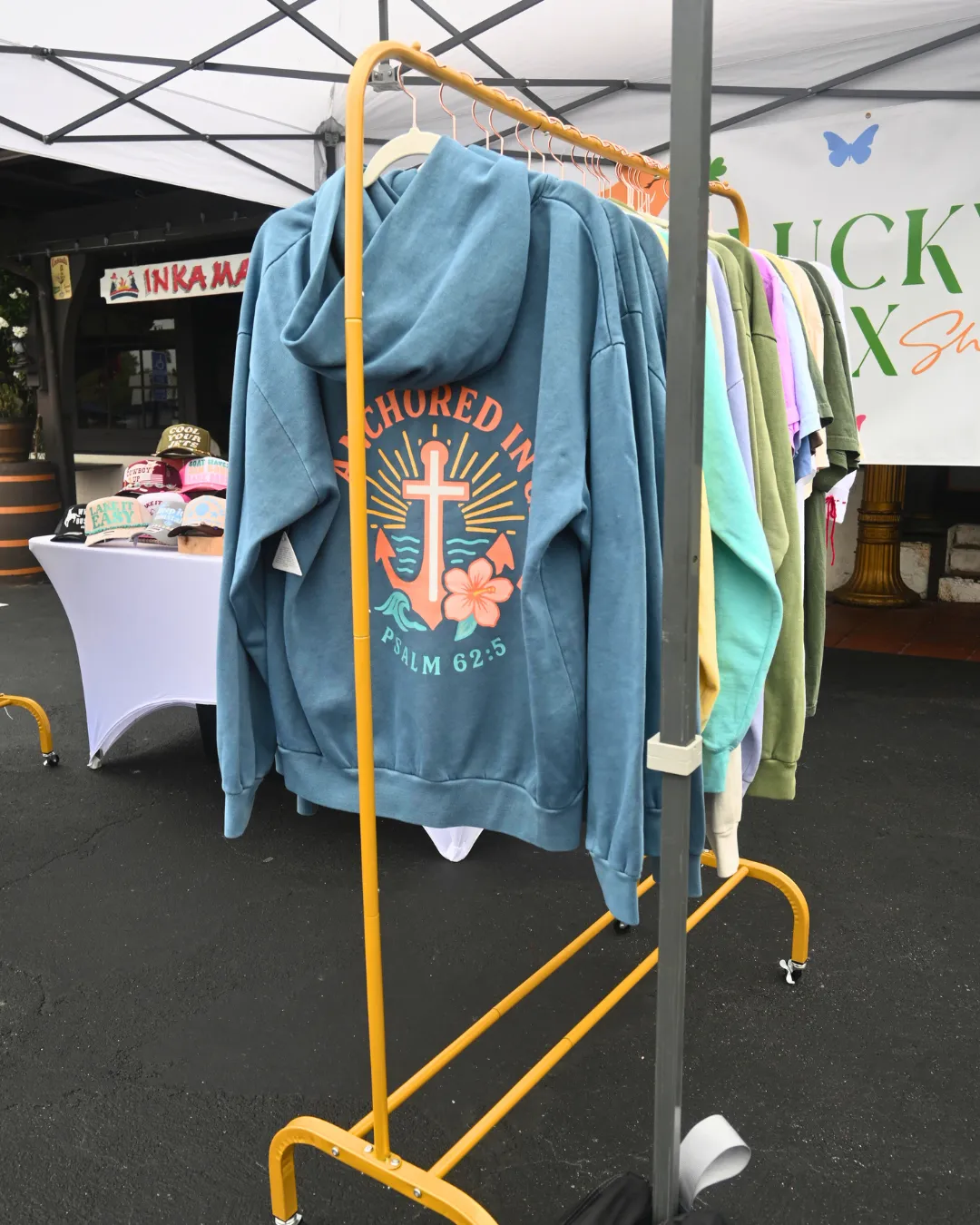
ART, CRAFTS, CLOTHING
Artwork including: paintings, prints, resin
Crafts: Embroidery, burp cloths, blankets, bags, hats
Handmade clothing, Bikinis, T-Shirts, totes, sweatshirts
🌍 Farmers’ Markets Around the World
🇪🇺 European Union – Farm to Fork & Food Sovereignty
Across the European Union, farmers’ markets are often linked to formal agricultural policy—particularly the Farm to Fork strategy, which aims to reduce food insecurity, support rural economies, and improve nutritional access.
Many EU countries support:
Local sourcing certifications
Organic production labeling
Producer-only market rules
Direct-to-consumer economic incentives
The result is a robust, regionally nuanced marketplace across France, Germany, Ireland, and other member states—often located in historic town squares or along pedestrian-only boulevards.
🇬🇧 United Kingdom – A Rising Movement Since the 1990s
The first officially recognized UK farmers’ market launched in 1997. Since then, over 500 markets have sprung up nationwide, driven by:
Increased consumer concern about food safety and quality
Desire to support struggling British farmers
Push back against industrial food systems
Public interest in slow food, cooking shows, and sustainability
These markets emphasize transparency, freshness, and producer authenticity, and have become especially important in revitalizing town centers and rural economies alike.
🇺🇸 United States – From Niche to Mainstream
Farmers’ markets have grown exponentially in the U.S. over the past few decades. What began as small local gatherings in the 1970s and 80s exploded into a national network of over 8,000 markets by 2013.
Key drivers of this growth include:
Interest in local, organic, and seasonal foods
Desire to support small farms
Concerns over GMOs, additives, and long-distance transport
Government funding for food assistance programs at markets
Today, cities like New York, Austin, Seattle, Los Angeles, and Portland have highly structured, multi-market systems with funding support, nutrition incentives, and educational outreach programs. Many markets accept EBT/SNAP benefits, and initiatives like “Double Up Bucks” help low-income residents afford more fresh food.
🧭 Universal Pattern
No matter where they are in the world, farmers’ markets share common threads:
Shorter supply chains
Stronger connection between growers and eaters
Cultural preservation
Economic opportunity
Celebration of food as a communal experience
These markets remind us that the way we eat can also be a way we belong, build, and care.
BEACHWEAR AND HANDMADE GOODS
CANDLES, BODY CARE, HOME GOODS
Perfumes, Lotions, Shampoo, Conditioner, Shower Gel, Hair oil, Essential oils, Body Butter, Candles, Beach Decor, Calming Decor, Jewelry

⚖️ Truth in Labeling: What’s Really Local?
One of the reasons people love farmers’ markets is trust—the belief that what they’re buying is fresh, local, and made or grown by the vendor standing behind the table. But as farmers’ markets grow in popularity, they also attract vendors who may not always play by the rules.
This is where truth in labeling becomes essential.
🕵️♂️ The Issue: Resellers vs. Producers
Many markets are labeled as “producer-only”, meaning vendors must grow, raise, or make everything they sell. But in some markets—or in looser systems—vendors may resell products purchased from wholesalers or grocery distributors and market them as “local” or “organic.”
Sometimes the deception is subtle:
Grocery-store apples displayed in rustic baskets
Imported garlic sold as “California fresh”
Meats repackaged under local-sounding names
While not always illegal, these practices erode trust, authenticity, and the spirit of the market.
🛑 Signs of Mislabeled or Resold Goods
No knowledge of where the food was grown or how it was raised
Produce with barcode stickers (PLUs) or waxy coatings
Identical packaging to supermarket products
“Local” fruit that’s out of season for the area
Vendors with unusually large variety—especially non-regional crops
A genuine farmer or artisan can usually tell you what field the food came from, when it was harvested, and how it was grown or prepared.
🧾 Labels & Legitimacy
Most packaged meat, dairy, and processed goods are required by law to include:
The producer’s or distributor’s name
Processing or inspection info (especially for meat)
“Distributed by,” “Packed for,” or “Co-packed by” language, if resold
You can often spot the difference between:
Resold goods: Professionally packed with labels listing commercial processors
Locally produced goods: Hand-labeled or packaged with direct farm or producer info
🛡 How Markets Handle It
Well-managed farmers’ markets often:
Require transparency from vendors
Perform spot checks on farm visits
Create clear signage for “reseller” vs. “producer” booths
Limit resell items to rare exceptions (e.g. bananas in a cold climate)
Some markets even establish vendor codes of conduct and consumer grievance processes to maintain integrity.
✅ What You Can Do as a Shopper
Ask questions: Where was this grown? When was it harvested?
Know your seasons: If strawberries show up in winter, they probably weren’t local
Support certified producer markets: Some states and regions offer accreditation programs
Use your senses: Local food often smells, looks, and feels different—more vibrant, imperfect, alive
When vendors are honest and transparent, it strengthens the entire market ecosystem.
When they aren’t, it’s up to communities and market managers to restore the culture of trust.
🧰 How Farmers’ Markets Are Managed
Behind every vibrant, bustling farmers’ market is a team—or sometimes a single person—working hard to keep it all running smoothly. While the public sees colorful tents, fresh food, and smiling vendors, managing a farmers’ market is a complex job that requires coordination, fairness, transparency, and trust.
Farmers’ markets can be run by local governments, nonprofit organizations, neighborhood groups, chambers of commerce, agricultural collectives, or even individual market managers. Each market develops its own rules, structure, and goals depending on its mission, location, and vendor community.
🏛️ Who Runs the Market?
Management structures vary, but most fall into one of three categories:
Government-Managed Markets
Often run by a city’s parks and recreation department or agricultural extension office. These markets tend to follow clear rules, may have access to public space, and often support food security programs like SNAP and WIC.
Community or Nonprofit-Managed Markets
Organized by neighborhood associations, churches, or food advocacy nonprofits. These markets may be deeply tied to community development and health initiatives.
Vendor-Cooperative or Privately Managed Markets
Run by a board of farmers or a dedicated market manager. These may be more entrepreneurial and flexible, but still require guidelines and enforcement.
📋 Common Market Management Responsibilities
Whether casual or highly structured, most markets involve similar management duties:
Vendor selection and application review
Stall assignments and site layout
Licensing, insurance, and health permits
Fee collection and financial tracking
Marketing, promotion, and community outreach
Event planning, music, and educational activities
Enforcing market rules and conflict resolution
Coordinating with city officials, inspectors, and local partners
A good market manager wears many hats—part community organizer, part operations director, part agricultural advisor.
📜 Market Rules: What Do They Regulate?
To preserve fairness and integrity, most markets adopt clear guidelines. These may include:
Who qualifies as a vendor (e.g., must grow/make all their own products)
What products are allowed or prohibited (e.g., no reselling or out-of-season imports)
Pricing freedom vs. limits
Booth behavior, signage rules, and cleanup requirements
Attendance, cancellations, and rain policy
Health code and food safety compliance
Some markets require farm inspections or photo documentation to verify that vendors are truly producers.
🚨 Market Integrity Challenges
Unfortunately, not all markets are well-managed. Common issues include:
Reseller infiltration in producer-only spaces
Lack of enforcement when rules are broken
Favoritism or vendor conflicts over stall locations or product types
Financial mismanagement or unclear accounting
Strong leadership and community accountability are essential for building a trustworthy, resilient market.
🤝 Building a Successful Market Culture
The best farmers’ markets operate with a balance of:
Clear structure (so vendors and shoppers know what to expect)
Local adaptability (so policies fit the unique culture and geography)
Community values (so the market reflects and uplifts the people it serves)
Whether it’s five stalls or fifty, a farmers’ market thrives when it is well-organized, mission-driven, and led with integrity.
🥩 Meat and Dairy at Farmers’ Markets:
What’s Real, What’s Resold
Not all meat and dairy at farmers’ markets is created equal. While many vendors offer high-quality, locally raised products, others may be reselling goods from commercial suppliers—sometimes without making that clear to customers.
Understanding how labeling works is key to knowing whether you’re buying direct from the farm or from a reseller with clever branding.
🧾 Meat Labeling: What to Look For
All beef, pork, lamb, and poultry sold to the public in the U.S. must be processed in a state- or federally-inspected slaughterhouse. Whether the meat is sold at a grocery store or a farmers’ market, it needs a government inspection legend on the package.
But beyond that, there are two main categories of meat vendors:
1. 🧑🌾 Producer-Sellers (True Farmers)
These vendors raise their own animals and either:
Process the meat themselves (in custom-exempt facilities where allowed)
Or send it to an inspected facility, then label and sell it directly
✅ Their packaging usually includes:
Farm or ranch name
Cut type, weight, price, safe handling instructions
No “distributed by” or “packed for” wording
2. 📦 Resellers or Private Label Vendors
These vendors buy meat from distributors or commercial processors, then sell it under their own brand name.
⚠️ Their packaging often includes:
A statement like “Distributed by,” “Packed for,” or “Prepared for [Company Name]”
A USDA or state inspection seal with an Establishment Number (EST #) for the processor
A slick commercial look, often identical to grocery store packaging
📍 Key Insight: If a vendor is not the original raiser or processor, they’re reselling—even if the product is good quality.
🧈 Dairy & Eggs: How to Know What’s Local
Farmers’ markets often feature:
Free-range chicken eggs
Fresh milk (where raw milk is legal)
Yogurt, butter, and cheeses (goat, cow, sheep)
Ice cream or dairy-based desserts
But similar to meat, there’s variation in sourcing:
✅ Producer-sellers will tell you exactly:
Where the animals live
What they’re fed
How the dairy is processed (on-farm or in a certified facility)
Whether products are raw, pasteurized, or aged
⚠️ Resellers might offer packaged dairy from large co-packers under their own label.
📎 Tip: Look for hand-labeled packaging, cooler containers, and transparency in how animals are raised.
🕵️ How to Tell the Difference at a Glance
Label Clue What It Means“Distributed by” or “Packed for”Likely resold or co-packed. Inspection Legend with EST #Processed in a commercial facility (required)No brand listed Usually from the vendor’s own farm Farm story, photos, or signage. True producer is proud to share their process Mass-produced look. Possibly repackaged grocery or distributor item
🧠 Why It Matters
Supporting true farm-raised meat and dairy:
Keeps money in local agriculture
Builds trust between producers and customers
Protects animal welfare and small-scale operations
Offers transparency in food quality and environmental impact
Markets that don’t enforce labeling standards can erode that trust, unintentionally turning into outdoor grocery stores instead of authentic food ecosystems.
🥬 Labeling, Packaging & Certifications: A Smart Shopper’s Guide
Farmers’ markets are meant to be places of trust—where you can shake the hand that grew your food. But even in the friendliest booths, it helps to know how to read labels, spot red flags, and ask smart questions.
Not everything at a farmers’ market is automatically organic, local, or homemade—and that’s okay. What matters most is transparency.
This guide gives you the tools to read between the lines—so you can shop with confidence, clarity, and purpose.
📦 Understanding Labels: What They Really Mean
🏷️ Label Phrase💡 What It Typically Means“Packed for” or “Distributed by”Likely a resold product, not produced by the vendor“Farm Name” only. Usually indicates a direct-from-the-farm item“USDA Organic”Certified organic by the USDA (stringent, regulated)“Made with organic ingredients”Contains some organic items, but not 100% organic“All Natural”Not a regulated term—can mean anything“Local”No legal definition—ask how local and from where“Free-range” or “Pasture-raised”Good indicators—but verify with vendor or certifications“Raw” (milk, honey, etc.)Unprocessed—may have legal restrictions depending on state“Handmade” / “Small Batch”Often true, but no official oversight
📍 Tip: If a label seems vague, ask the vendor what it means. Real producers will gladly explain their process.
🧼 Packaging: Clues to Authenticity
Handwritten or home-printed labels often signal small-batch or farm-based origin
Shrink-wrapped, barcode-tagged items may be from commercial sources
Professional-looking labels can be genuine—but check for processor info
Missing origin info (farm, location, or contact) is a red flag
🧠 Ask: Who made this? Where was it processed?
If the answer feels overly rehearsed or vague, dig deeper.
✅ Certifications That Add Credibility
Some producers go through extra steps to certify their practices. These aren’t required—but can give assurance when available.
Certified Organic (USDA) – no synthetic fertilizers, pesticides, or GMOs
Certified Naturally Grown – grassroots version of organic certification
Animal Welfare Approved – high standards for livestock treatment
Non-GMO Project Verified – no genetically modified ingredients
State Certified Producer – confirms farmer grows their own products (varies by state)
Food Safety / Cottage Food Laws – governs home-prepared foods
Not every great vendor has certifications—but those who do usually display them with pride.
👂 Questions That Uncover the Truth
Where is your farm located?
Did you grow/make/raise this yourself?
When was this harvested or made?
How do you keep it fresh?
Are you licensed or certified for this product?
A trustworthy vendor will usually smile and give you real answers—not rehearsed marketing lines.
🧭 Final Rule: Trust Your Senses & Your Gut
🧠 Your brain will pick up subtle cues in labeling, language, and presentation
👃 Your nose will detect the difference between vibrant and tired food
👐 Your hands will feel freshness and texture
❤️ Your intuition will sense honesty, transparency, and pride
This guide isn’t meant to make you suspicious—it’s designed to make you savvy.
When you understand what labels and packaging reveal, you support the vendors who are doing things right—and help make your market stronger, fairer, and more authentic for everyone.
BECOME A VENDOR WITH US
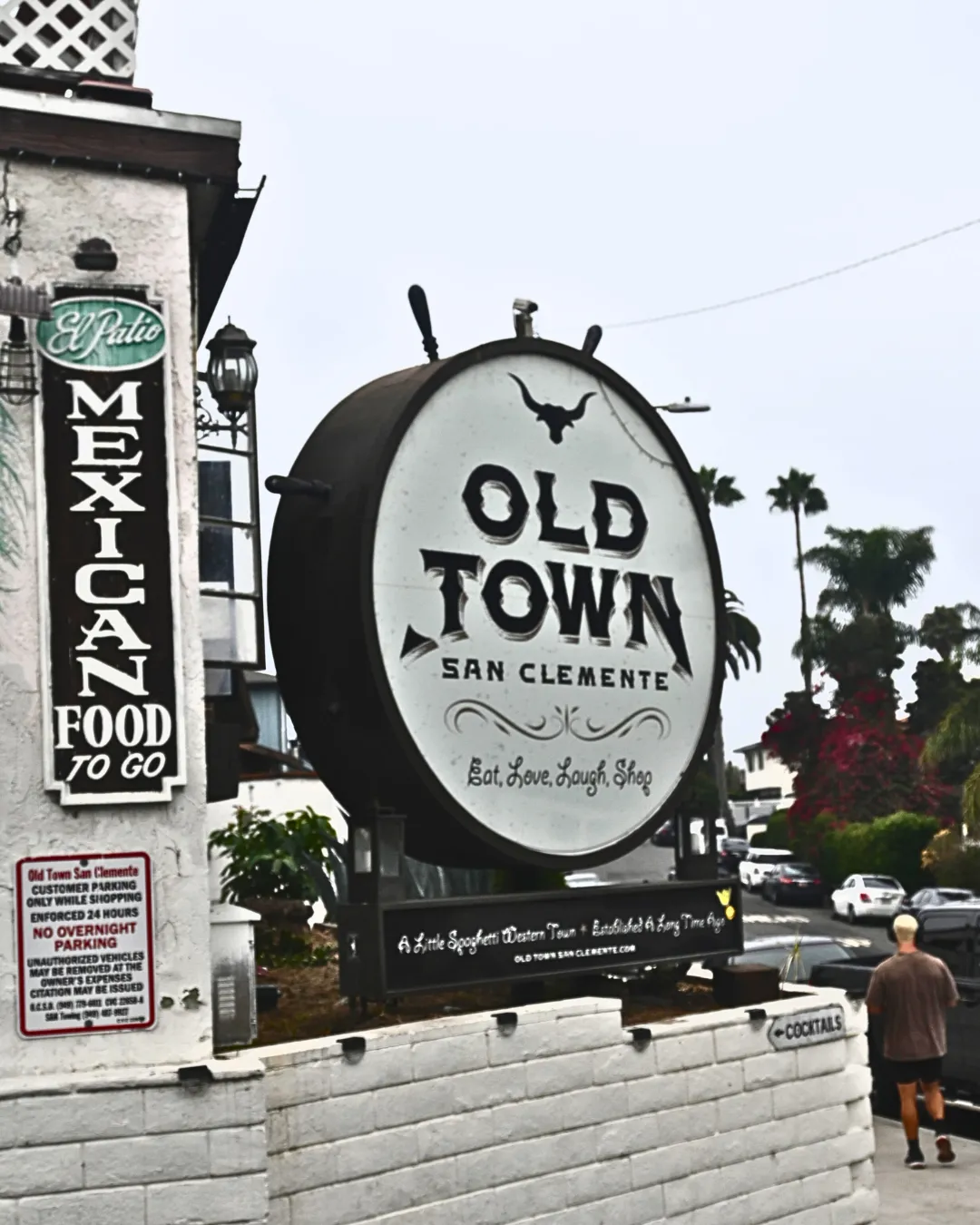
Farm-to-table (or farm-to-fork) refers to the stages of the production of food: harvesting, storage, processing, packaging, sales, and consumption. Farm-to-table also refers to a movement concerned with producing food locally and delivering that food to local consumers. Linked to the local food movement, the movement is promoted by some in the agriculture, food service, and restaurant communities. It may also be associated with organic farming initiatives, sustainable agriculture, and community-supported agriculture.
Community-supported agriculture (CSA; sometimes known as community-shared agriculture) is an alternative, locally based economic model of agriculture and food distribution. A CSA also refers to a particular network or association of individuals who have pledged to support one or more local farms, with growers and consumers sharing the risks and benefits of food production. CSA members or subscribers pay at the onset of the growing season for a share of the anticipated harvest; once harvesting begins, they periodically receive shares of produce. In addition to produce, some CSA services may include additional farm products like honey, eggs, dairy, fruit, flowers, and meat. Some CSAs provide for contributions of labor in lieu of a portion of subscription costs
Vertical farming as a component of urban agriculture is the practice of cultivating plant life within a vertical space saving structures, as opposed to land which is horizontal. There are many forms vertical farming: hanging plants, greenhouses to even skyscrapers. This changes the way we use land for agriculture or growing our gardens.
Are You a Vendor? Don't Miss Out Your Dream Market!
Enter your info below for more pictures and details on this beautiful property.
👤 Vendor Contact Information
🛒 About Your Booth
📎 Upload Required Documents
Need help getting your permits or event insurance?
Check out our step-by-step guide here: https://oldtownscmarket.com/vendor-guide
Please upload the following documents as part of your application:
💵 Booth Fee
✅ Agreements and Disclaimers
By submitting this application, I acknowledge and agree to the following:
Waiver and Release of Liability
I understand that by participating in this event, I release and hold harmless the organizers, their employees, volunteers, agents, and affiliates from any and all liability, injury, or damages that may occur in connection with this event.
Exhibitor Conduct
I understand that the organizers reserve the right to remove any vendor or participant from the event if deemed necessary. I release the host location, the City of San Clemente, and all associated staff from liability resulting from such action.
Public Safety Compliance
I agree to operate my booth with full regard for public safety and in compliance with all local and state fire, safety, and health regulations. I understand that sound must be kept at a respectful volume.
Photo Waiver and Release
I grant permission for the organizers to use photos of my booth, products, or myself taken during the event for future promotional and marketing purposes.
Loading and Unloading Policy
I agree to follow the 15–20 minute time limit for use of designated loading and unloading zones and will plan accordingly.
Event Guidelines
I confirm that I have read and understand the event guidelines and acknowledge that the organizers have full discretion to approve or deny any application.
Seller’s Permit Requirement
I understand that a valid California Seller’s Permit must be submitted prior to the event and must be available at my booth during the event.
Application Disclaimer
I understand that submission of this application does not guarantee acceptance, and booth placement is at the full discretion of the event organizers.
Old Town Market, Located at: 111 W. Avenida Palizada, San Clemente, CA 92672, 2nd Saturday of Each Month 7am to 11am
This site is owned and opertated by University of San Clemente Inc. (C) 2025

